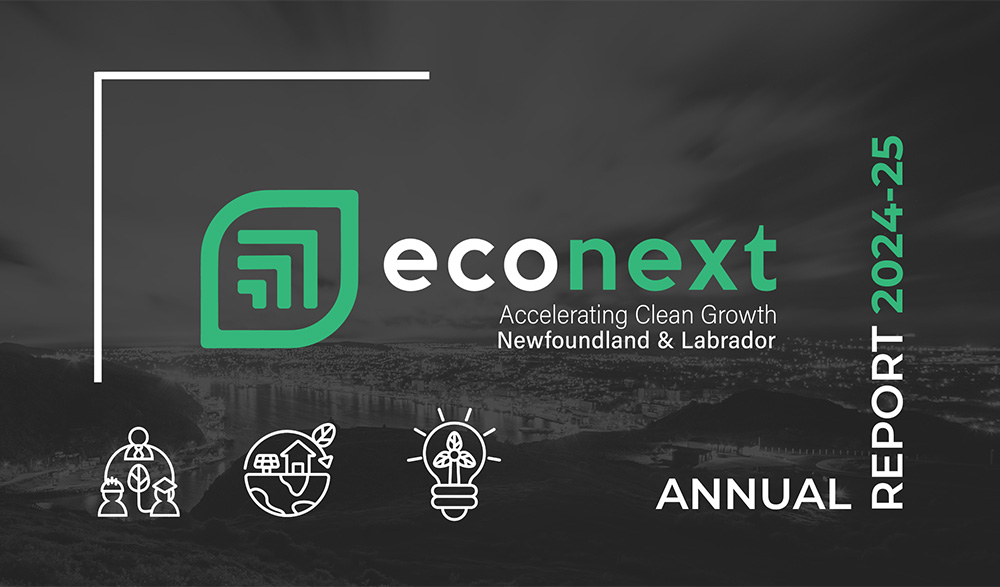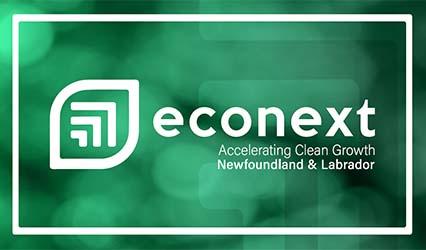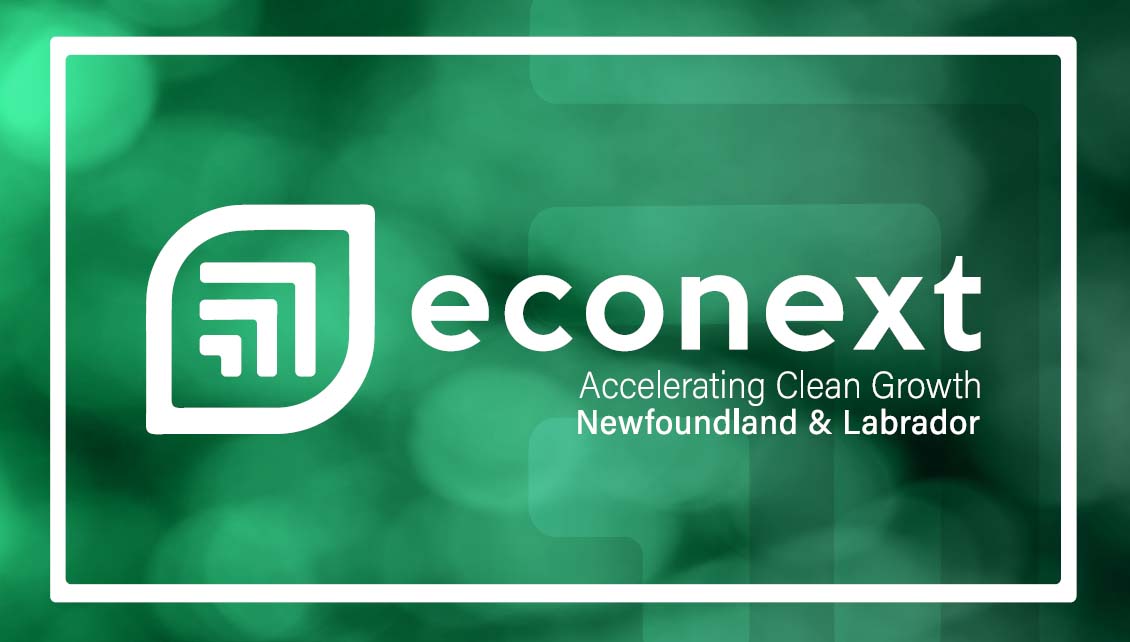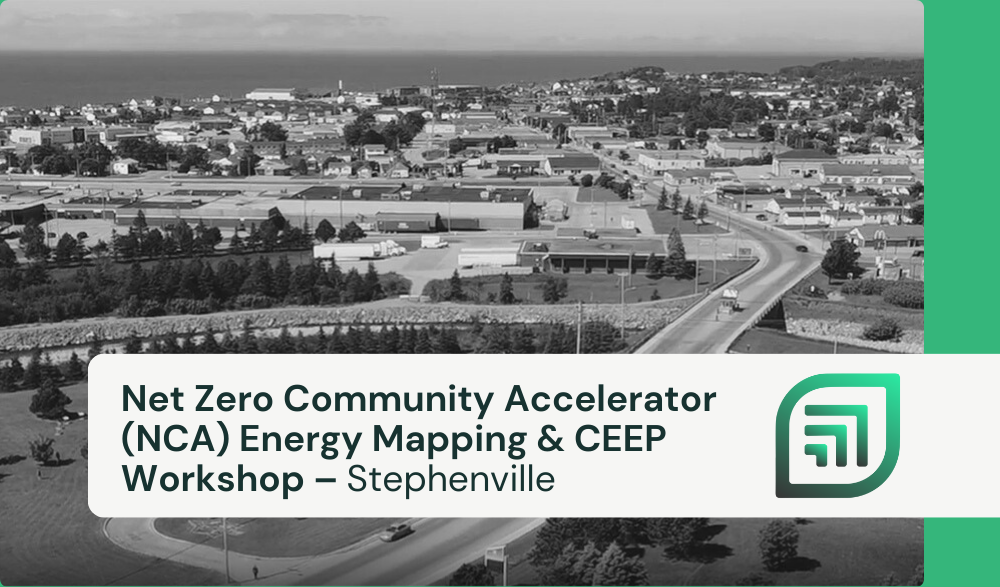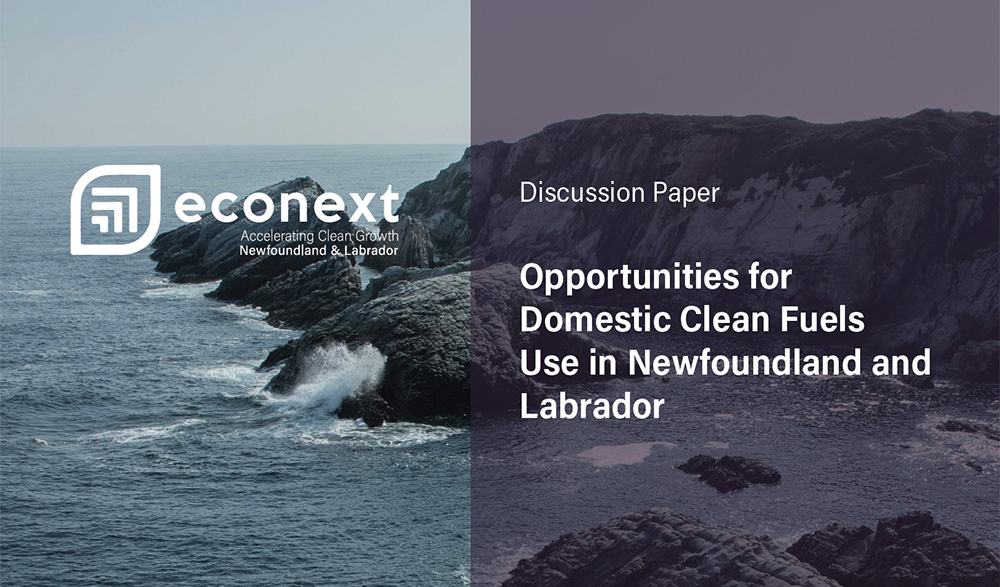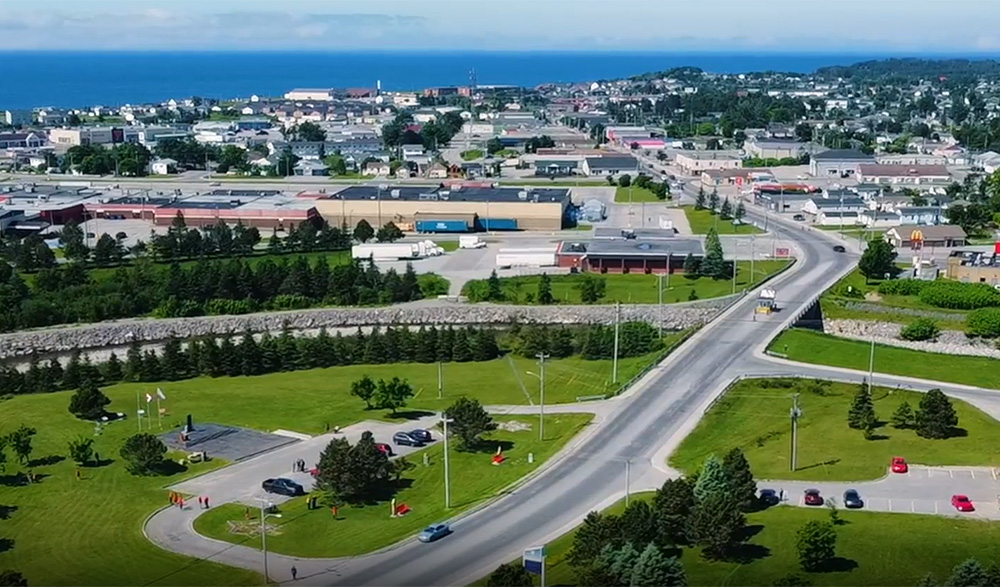econext‘s Board of Directors provide direction and support to the organization’s staff in their work to accelerate clean growth in Newfoundland and Labrador.
The following five (5) candidates, in alphabetical order by last name, have been nominated for a total of five (5) positions:
- Laurie Coady
- Joshua Barrett
- Kristina Kearney
- Heather Murphy
- Dave Pinsent
Nominee bios follow below.
Laurie Coady
Chief Financial Officer, North Atlantic
Biography:

Laurie Coady, CPA/CMA, is a strategic, collaborative, and results-oriented leader with over 25 years of experience in energy, education and financial services in Newfoundland and Labrador and throughout Canada. She has an extensive background in corporate finance, commercial negotiations and risk management and a deep knowledge of the province’s energy industry.
Currently, as Chief Financial Officer (CFO) at North Atlantic, Laurie oversees all the financial and technology-related activities for the network of residential, commercial, and wholesale business divisions while supporting its long-term renewables strategy. Laurie’s depth of experience across various finance disciplines, combined with her energy industry knowledge are key to driving North Atlantic’s operational acumen and delivering sustainable growth. While maintaining robust financial strength for North Atlantic’s ongoing business, Laurie will play a key role as the company advances its position at the forefront of the integrated renewable energy sector.
Prior to joining North Atlantic, Laurie held senior finance and commercial positions within the energy sector, including ExxonMobil Canada and the Oil and Gas Corporation of Newfoundland and Labrador. In these roles, Laurie led major initiatives in areas such as offshore crude marketing and transportation, acquisitions, joint venture negotiations and system and control implementations.
In addition to her CPA/CMA designation, Laurie has an MBA from Queen’s University, and her Bachelor of Commerce (Co-operative) degree is from Memorial University. Laurie has been actively involved in volunteer activities with several non-profit organizations including the Writers Alliance of Newfoundland and Labrador, the Avalon Minor Hockey Association and the Newfoundland and Labrador Lacrosse Association.
Laurie is currently a member of the Audit Committee with the Canadian Kennel Club, a position she has held since 2019.
Joshua Barrett
Environmental Specialist and Project Manager, Hatch
Biography:

Dr. Joshua Barrett is Team Lead, Environmental Services at Stantec Consulting Ltd., a global leader in sustainable engineering, architecture, and environmental consulting. In this role, he leads the Newfoundland and Labrador environmental assessment and permitting team, which have been supporting sustainable development of resource and industrial projects in the province for more than 30 years. Josh is a subject matter expert in socioeconomics, where he leads research and permitting in the areas of community and economic impacts.
Josh completed his PhD in Rural Studies from the University of Guelph, where his research focused on public policy and rural development, and the various ways local governments can improve the socioeconomic conditions of their communities. Working in Newfoundland and Labrador, Josh has a strong knowledge of the economic conditions of rural communities, and their history with both renewable and non-renewable natural resources. His research has indicated the potential for innovative economic development strategies in rural Newfoundland and Labrador as well as across Canada, particularly pertaining to opportunities related to the green economy. He is currently an Adjunct Professor at the University of Prince Edward Island and teaches both undergraduate and graduate courses at the University of Prince Edward Island and Memorial University of Newfoundland Beyond his work, research, and teaching, Josh has served as Councillor At-Large for the Town of Conception Bay South, Newfoundland and Labrador, since 2021. With a population of more than 27,000, Conception Bay South is the second-largest municipality in the province and has an annual budget of approximately $42 million. Since being elected, Josh has served on various Committees of Council, ranging from Finance and Administration to Planning and Development, and has chaired the Recreation and Services Committee since 2024.
Josh’s governance experience also extends to the non-profit sector. In 2023, he was appointed President of the Canadian Rural Revitalization Foundation. The Canadian Rural Revitalization Foundation (CRRF) was established in 1989 to contribute to the revitalization and sustainability of rural Canada through collaborative research for rural leaders in the community, private sector, and in all levels of government. CRRF works to create credible insights and to improve our understanding of issues and opportunities that are of common interest to rural residents across Canada. Knowledge and better understanding are the fundamental pillars for the welfare of rural communities and environments. CRRF is an organization comprised of members from across Canada, with diverse international links, representing rural leaders, rural organizations, development practitioners, government policy makers, researchers, students, and other stakeholders interested in the future of rural Canada.
As a province, we’re at a critical point. In 2025, we will have three elections – municipal, provincial, and federal – paired with a significant transition at econext with a change in CEO. Through it all, I believe there is an opportunity for continued advocacy and promotion from econext about issues that are important to its members. As a province, we need to remain competitive globally as we pursue economic diversification opportunities while maintaining environmental sustainability. Climate change is one of the biggest challenges our province face, and econext has a relevant role in supporting our communities to adapt to climate changes while promoting ways to support clean growth. Newfoundland and Labrador has an abundance of resources that have value to global markets, whether its critical minerals or wind energy, and I am confident econext will continue supporting the development of these emerging industries. I believe that, collectively, we need to grow in unison, and that econext has a role to support transitions in the labour market as these industries continue to grow. Lastly, I am a strong believer of the prosperity of rural Newfoundland and Labrador, and I look forward to focusing on ways we can continue to build strong relationships and partnerships with organizations in rural areas so that they are better equipped to experience socioeconomic success that comes with the potential of accelerating clean growth in Newfoundland and Labrador.
Kristina Kearney
Business Development/HR Consultant – Waterford Energy Services
Biography:

Kristina has demonstrated experience in staffing and recruiting in our energy sector globally for over 15 years. Kristina has been connecting qualified candidates to major developing projects with proactive personnel planning on behalf of our clients in Marine, Mining and Oil & Gas. Most of her career has been focused on Offshore Drilling and Exploration operations. She has a strong passion in being a part of candidates personal and professional growth in a new position. Her expertise was recognized when she won 9th Top Recruiter Award (2020) from Top Recruiter was the only candidate recognized in Eastern Canada. She also placed 11th in North America with Top Recruiter in 2021.
I am truly humbled to put myself forward as a candidate for the Econext Board of Directors. I feel that it is my time to do my part for an organization that has strongly influenced my career path in our energy sector. Without the support, connections and exposure that Econext has provided its members many of us wouldn’t see the relationships and knowledge in the sector as we do today.
Currently, I am the Business Development Manager for Waterford Energy Services., a local engineering and advisory service firm as ocean energy experts. In this role, I have gained great experience and exposure globally to the energy industry’s activities, including onshore engineering, offshore operations, renewables, regulatory, environment and compliance requirements. I have demonstrated experience in staffing and recruiting in our energy sector globally for over 15 years and have had the pleasure in connecting qualified candidates to major developing projects with proactive personnel planning on behalf of our clients in non-renewables and renewable energy.
I also served as President of our 35+ year-old Business Association of Newfoundland and Labrador (BANL) for 2 years, participated in various not-for-profit committees and lead local initiatives, such as LYNK (connecting young professionals in business) and the Narrows Club (past division of the Canadian Progress Club). I have also stat on the Board of Directors for Women in Resource and Development and Big Brothers Big Sisters. I hold a strong passion in being a part of candidates personal and professional growth in a new position. My expertise was recognized when I won 9th Top Recruiter Award (2020) from Top Recruiter was the only candidate recognized in Eastern Canada and also placed 11th in North America with Top Recruiter in 2021.
I dedicate my time to support our energy sectors across Newfoundland and Labrador and am an advocate for developing its full potential. I am committed to helping our post-secondary and high-school students to appreciate our energy industry, by promoting the incredible opportunities and jobs that are upcoming and in demand. You can find me in classrooms and panels across the province, teaching our students about what’s possible- right here at home. I have a passion for connecting people of this province with opportunities for personal and career growth to better our economy.
Our perspectives are relevant to our industry. That’s what I want to achieve above anything – a greater and more inclusive bond between the incredible leaders in our industry today, and the ones of tomorrow, like me, who want to move their legacy forward.
Heather Murphy
Director – Aquatic Resources, SEM Ltd.
Biography:

Heather has 16 years experience in the environmental sector in both regulatory and consulting roles. Her career started as an environmental assessment technical reviewer and salmon habitat restoration coordinator for the Department of Natural Resources in New Brunswick. Since then, Heather has experience working as a consultant in environmental regulatory compliance and permitting for projects ranging from mining, renewable energy, offshore oil and gas and large-scale transmission projects both locally and internationally. Her technical expertise lies in freshwater aquatic biology and permitting/regulatory compliance surrounding environmental assessment and all associated acts.
Heather spent 8 years as a consultant on the Lower Churchill Project with the environment and regulatory compliance team. Heather’s role as a permit coordinator involved obtaining permits and navigating (very public) environmental constraints for both Muskrat Falls and the Labrador-Island Link. In addition to permits coordinator, Heather also served as an environmental coordinator for all on-site environmental monitors during construction and acted as a liaison between the project and regulatory agencies.
Since working with SEM, Heather has managed and executed several projects for operating mines in the province including IOC’s Carol Mine, Vale’s Voisey’s Bay Mine and Tacora’s Scully Mine. Heather has also worked with several mining companies on the island of Newfoundland including Envirogold’s Buchans River Delta Rehabilitation Project, Matador’s Cape Ray Exploration Project and Marathon’s Valentine Gold Project. The scope of these projects ranged from reducing reliance on diesel through wind energy implementation, completing Schedule 2 Amendments under the Metal and Diamond Mining Effluent Regulations, stakeholder consultations, aquatic baseline studies, overall project environmental assessment/permitting and more. Besides several mining clients, Heather has also contributed to projects for Growler Energy on several of their renewable projects and recently for NL Hydro on their Bay D’Espoir Unit 8 expansion project.
David Pinsent
Environment and Sustainability Manager, World Energy GH2
Biography:

David was born and raised in Newfoundland and Labrador and completed Bachelor’s and Master’s degrees in Marine Biology at Memorial. He started his career as an environmental scientist after 5 years in fisheries research. He worked for 14 years as an environmental consultant conducting and managing environmental assessments and environmental effects monitoring programs for various industries in the province. The subsequent 11 years were spent in the oil and gas industry as an environmental and regulatory advisor. During that time, David served on several advisory committees related to environmental effects monitoring including IAAC’s Regional Assessment Follow-up Committee for Exploratory Drilling Offshore NL, CAPP’s Environment and Sustainability Committee, IPIECA’s Operating in the Marine Environment Task Force and the CSA’s committee to develop a standard for oil and gas operations in the Arctic. In 2021, David took on the role of Policy and Regulatory Lead with the Net Zero Project, where he studied and reported on the regulatory and policy frameworks for emissions reduction and pathways to net-zero within the offshore energy industry. For more than a decade, David has been a trusted resource for industry, during opportunities for engagement with government and in formulating advocacy positions around environmental policy and environmental assessment legislation. David is currently the Environment and Sustainability Manager with World Energy GH2, where is responsible for the environmental assessment, compliance, and monitoring for project Nujio’qonik. In his current role, David is also supporting an understanding of the regulatory framework of the hydrogen and wind energy in Newfoundland and Labrador. In his spare time, David enjoys cooking, hiking and salmon fishing.
